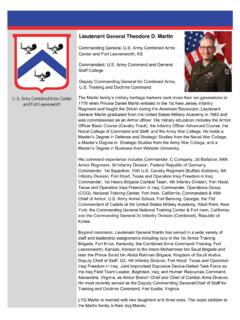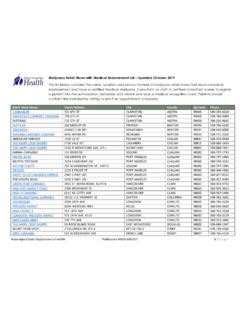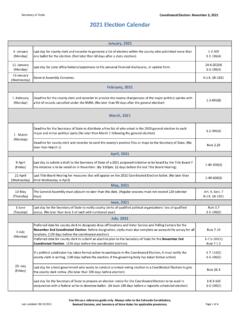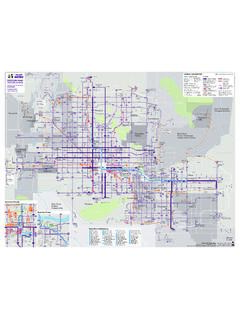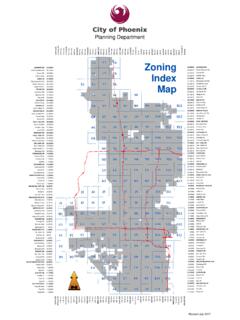Transcription of Mathematics Performance of Students in a Philippine State ...
1 INTERNATIONAL ELECTRONIC JOURNAL OF Mathematics EDUCATION e-ISSN: 1306-3030. 2020, Vol. 15, No. 3, em0586 Article History: Received 19 January 2020 Revised 27 February 2020 Accepted 8 March 2020 2020 by the authors; licensee Modestum Ltd., UK. Open Access terms of the Creative Commons Attribution International License ( ) apply. The license permits unrestricted use, distribution, and reproduction in any medium, on the condition that users give exact credit to the original author(s) and the source, provide a link to the Creative Commons license, and indicate if they made any changes. OPEN ACCESS Mathematics Performance of Students in a Philippine State University Marvin Guinocor 1, Porferio Almerino 1*, Irene Mamites 1, Charisma Lumayag 1, Mary Anne Villaganas 1, Mae Capuyan 2 1 Cebu Technological University, PHILIPPINES 2 Department of Education, Cebu Province, PHILIPPINES * CORRESPONDENCE: ABSTRACT Teaching and understanding Mathematics is a significant concern in any educational system.
2 Largish efforts are made by various researchers to find out the causes of Students Performance in the subject. Despite every one of these endeavors issues still, endure. The researchers used a descriptive-correlational design to gather data through an adopted survey tool for study habits and attitudes. The study was conducted at the Cebu Technological University San Francisco Campus, Cebu, Philippines. The respondents were the 52 Education Students who were enrolled in the Mathematics program; they answered the survey of study habits and attitudes. The gathered data were treated using frequency, simple percentage, weighted mean, Pearson r, and t-test. It was found out that there is a significant positive high correlation between the study orientations of the Students considering their academic Performance in terms of their Graded Point Average (GPA) in Mathematics subjects. It was concluded that the study orientations of Students differ.
3 The researchers recommend conducting a further study on the effectiveness of the developed research-based study strategies. Keywords: math Performance , study orientation, college Students INTRODUCTION Education is significantly one of the most critical factors in producing a human resource that is necessary for development in every aspect of a country. Education, in a broad sense, is any activity that has a significant effect on developing the cognitive, skills, and attitude of any individual. It is composed of various disciplines, which should be taught and learned by every human. One of the most established disciplines and is part of every curriculum around the world in Mathematics . In the United States, Math achievement of American Students in 2015 fell again for the second time on a significant international benchmark, as stated in the Program for International Student Assessment (PISA) (Kelly et al., 2013). American Students were stagnating in reading and science proficiency, while their Math Performance declined (Hossain, 2012).
4 The Trend International Mathematical Science Study Advanced (TIMMS) examined patterns of Students achievement in Mathematics and found out that for over 20 years, there were some declines in the Students performances, and there were no improvements in the countries assessed (Maltese & Tai, 2011). In the case of Indonesia, the PISA report (2012) showed that the achievement scores of Indonesian Students in Mathematics are recorded very low and was ranked the 64th out of 65 countries (Ajisuksmo & Saputri, 2017). Guinocor et al. 2 / 14 In Asia, Mathematics is viewed as one of the most critical subjects wherein Students are encouraged to study the discipline (Leatham & Peterson, 2010; Ronis, 2008). It is in this view that in most Asian countries, guiding practices on children s Mathematics achievements are quite more vigorous (Wei & Dzeng, 2014). As indicated by Etcuban and Pantinople (2018), that showing acquired an attractive change in the conduct of learning.
5 In the Philippines, Mathematics is a general education subject in primary and higher education where learners are expected to gain understanding and appreciation of its principles as an applied-using appropriate technology in problem-solving, critical thinking, communicating, reasoning, making connections, representations, and decisions in real life (K to 12 Basic Education Curriculum). According to Bl meke and Delaney (2014), It is essential hence required as a subject almost in every field. However, problems related to Mathematics achievement are still evident not only in the Philippine setting but also right in other countries. In the Philippine setting, educational modules in this order contain a specific topic and instructional plan standards to empower understudies to create consistent and numerical abilities expected to get it the fundamental mathematical concepts. However, low Performance in this discipline is still evident.
6 The participation of the Philippines in TIMSS confirmed this deplorable condition-based from the report posted last 2013 that the Performance of Filipino Students in national and international surveys on Mathematics and science competencies lag behind its neighboring countries like Singapore, South Korea, Hongkong, Chinese Taipei and Japan (Care et al., 2015). The Filipino Students excel in knowledge acquisition but fare considerably low in lessons requiring higher-order thinking skills (Dinglasan & Patena, 2013; Ganal & Guiab, 2014). Even college Students are not exempted from the problems in learning and mastering Mathematics (Americans, 2009; Presmeg, 2006). Students Performance in Mathematics , as indicated by the grades they achieved, is affected by various factors. Among the various factors, this study will primarily deal with Students affective characteristics, which focus on study habits and study attitudes, which are then further referred to as study orientations as reiterated by Biswas (2015).
7 Two of the significant concerns of college Students are getting control of time management and study habits. Kaushar (2013) notes that most Students nowadays are spending less time studying, a large portion of them does not pursue any calendar, and they do not know with the time the executives idea. Then again, contemplate propensities appear to be a vital determinant of scholastic execution (Cerna & Pavliushchenko, 2015). Discoveries of Bashir and Mattoo (2012) uncovered a profoundly critical connection among different factors of study propensities and scholastic execution. The consequences of the investigation of Khurshid et al. (2012) demonstrated that there was a definite connection between study propensities and scholastic accomplishment. Study attitude, on the other hand, can determine the extent to which learning occurs and how learning occurs as this influences the effort Students put in understanding and practicing mathematical concepts and skills.
8 If poor study orientations exist among the Students , these could lead to low Performance in Mathematics . The orientation level of the Students has a significant relationship with their academic Performance (Bong, 2004; Horstmanshof & Zimitat, 2007). Figure 1. Students Performance for the past four academic years INT ELECT J MATH ED 3 / 14 According to Mutai (2011), if a student, regardless of his/her sex, has an excellent report introduction, he/she is probably going to be a high achiever. Then again, if an understudy has an unfortunate report introduction, he/she is probably going to be a low achiever. It is in this premise that this study aims to provide a comparison of data among the study orientations of the Students enrolled in a Mathematics program and consider the relationship between the study orientation of each group towards their academic Performance . Understanding these will help lay the foundation for developing research-based study strategies, thus develop the right study orientations among the Students .
9 FRAMEWORK This study is mainly anchored on the Theory of Confluent Education, as defined by Stewart Shapiro (1983), a leading figure in the philosophy of Mathematics , where he presented a version of structuralism. According to him, confluent education is a deliberate, purposive evocation by responsible, identifiable agents of knowledge, skills, attitudes, and feelings which flow together to produce wholeness in the person and society. It likewise underpins a faith in the meeting up of psychological, emotional, and psychomotor learning, one that mirrors the entire understudy. While its approach has received comments in recent times, it still has not gained full spread recognition as a valuable approach in business education (Loon & Nichol, 2015). In the Philippine context, this study is conforming to the call of the New Philippine Constitution, Article XIV, Sec. 10, wherein it states, Science and Technology are fundamental for national advancement and progress.
10 The State will offer need to innovative work, creation, development, and their usage and science and innovation, instruction, preparing, and benefits . If analyzed, Science and Technology cannot stand without Mathematics , as we know, Mathematics is the Queen and servant of Sciences. Confluent learning, as reemphasized by Loon and Nichol (2015), is holistic, it aims to activate and engage all of the learner s senses. It is rooted in Dewey s notion of collateral learning and is a philosophy and a process of teaching and learning in which the affective domain and the cognitive domain flow together, like two streams merging into one river. This necessitates an awareness of content and process and means being aware of and taking responsibility for the experience and context that people are interacting with, the topic and material are engaging. Leading authorities of teaching and learning from Confluent Education (CE) emphasized cognitive (scholarly working) and full of feeling (sentiments and convictions) learning inside a set of physical exercises that ask Students to do a meta.

